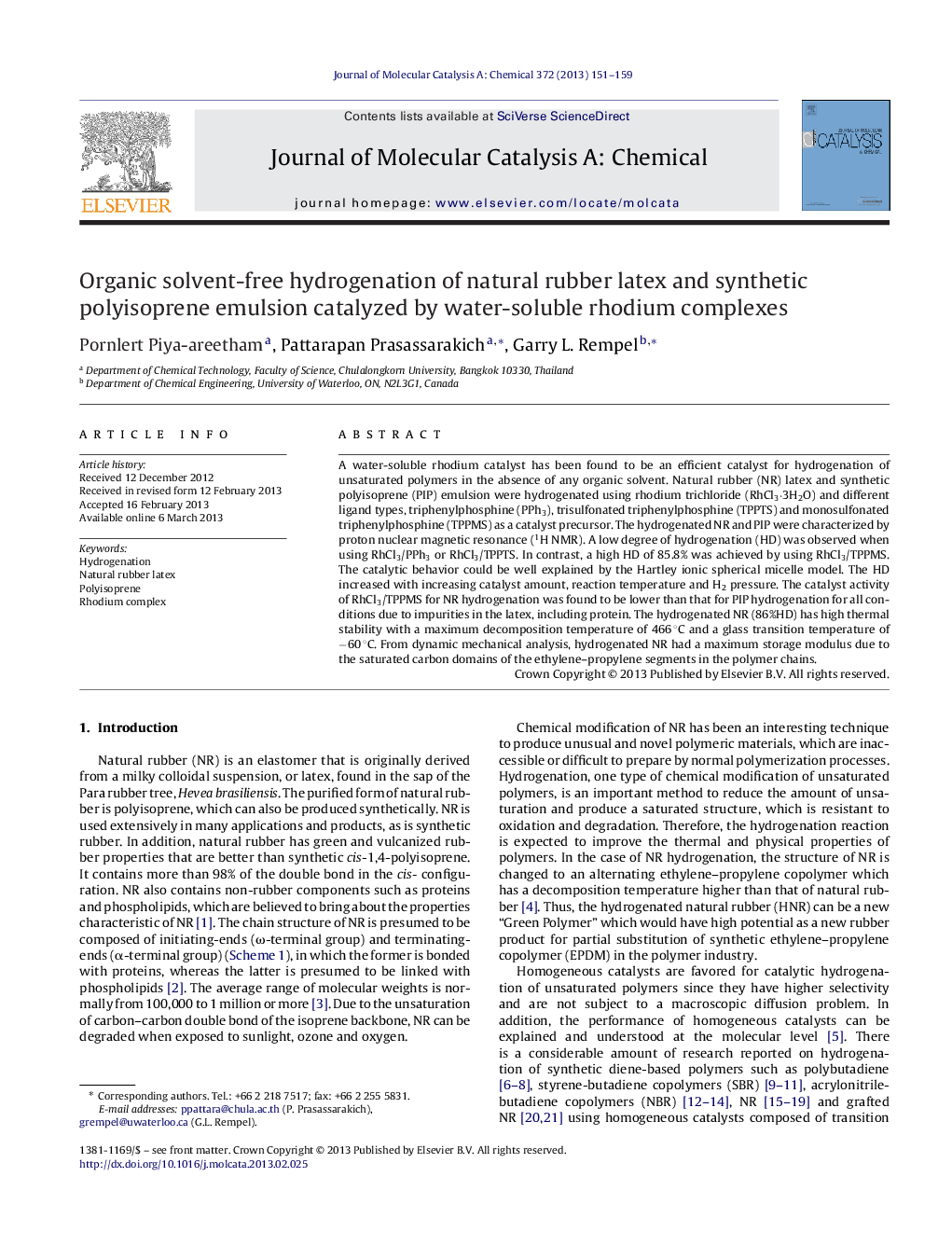| کد مقاله | کد نشریه | سال انتشار | مقاله انگلیسی | نسخه تمام متن |
|---|---|---|---|---|
| 65826 | 48404 | 2013 | 9 صفحه PDF | دانلود رایگان |

A water-soluble rhodium catalyst has been found to be an efficient catalyst for hydrogenation of unsaturated polymers in the absence of any organic solvent. Natural rubber (NR) latex and synthetic polyisoprene (PIP) emulsion were hydrogenated using rhodium trichloride (RhCl3·3H2O) and different ligand types, triphenylphosphine (PPh3), trisulfonated triphenylphosphine (TPPTS) and monosulfonated triphenylphosphine (TPPMS) as a catalyst precursor. The hydrogenated NR and PIP were characterized by proton nuclear magnetic resonance (1H NMR). A low degree of hydrogenation (HD) was observed when using RhCl3/PPh3 or RhCl3/TPPTS. In contrast, a high HD of 85.8% was achieved by using RhCl3/TPPMS. The catalytic behavior could be well explained by the Hartley ionic spherical micelle model. The HD increased with increasing catalyst amount, reaction temperature and H2 pressure. The catalyst activity of RhCl3/TPPMS for NR hydrogenation was found to be lower than that for PIP hydrogenation for all conditions due to impurities in the latex, including protein. The hydrogenated NR (86%HD) has high thermal stability with a maximum decomposition temperature of 466 °C and a glass transition temperature of −60 °C. From dynamic mechanical analysis, hydrogenated NR had a maximum storage modulus due to the saturated carbon domains of the ethylene–propylene segments in the polymer chains.
Figure optionsDownload high-quality image (189 K)Download as PowerPoint slideHighlights
► Natural rubber (NR) was hydrogenated by Rh catalyst in absence of organic solvent.
► The hydrogenation degree of 86% was achieved via aqueous-phase hydrogenation.
► Hydrogenated NR had high degradation temperature of 466 °C.
► From dynamic mechanical properties, hydrogenated NR had high storage modulus.
Journal: Journal of Molecular Catalysis A: Chemical - Volume 372, June 2013, Pages 151–159